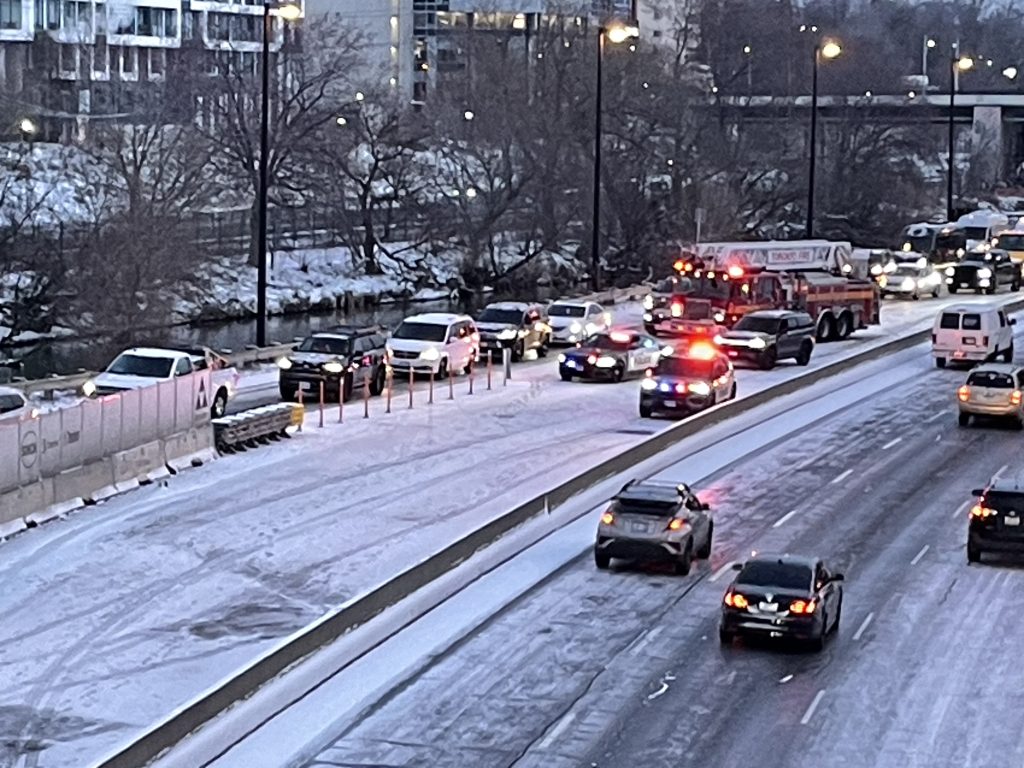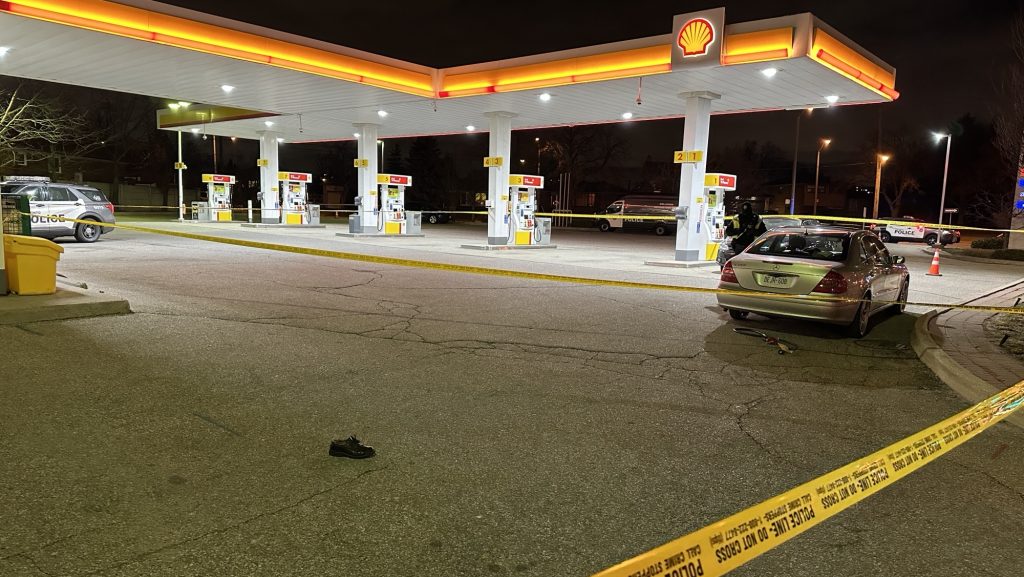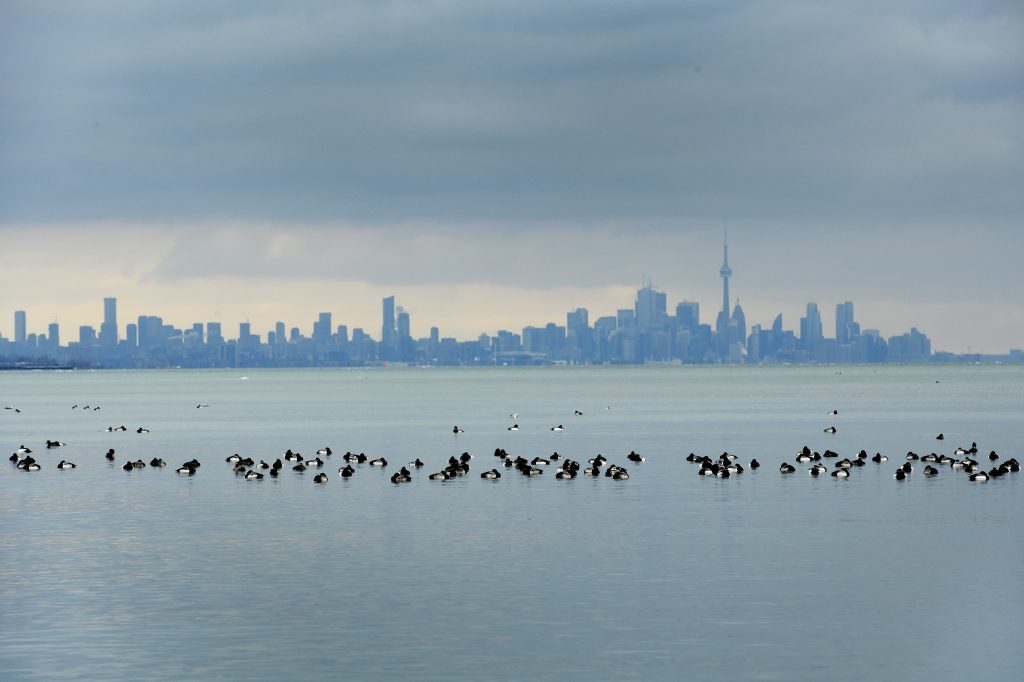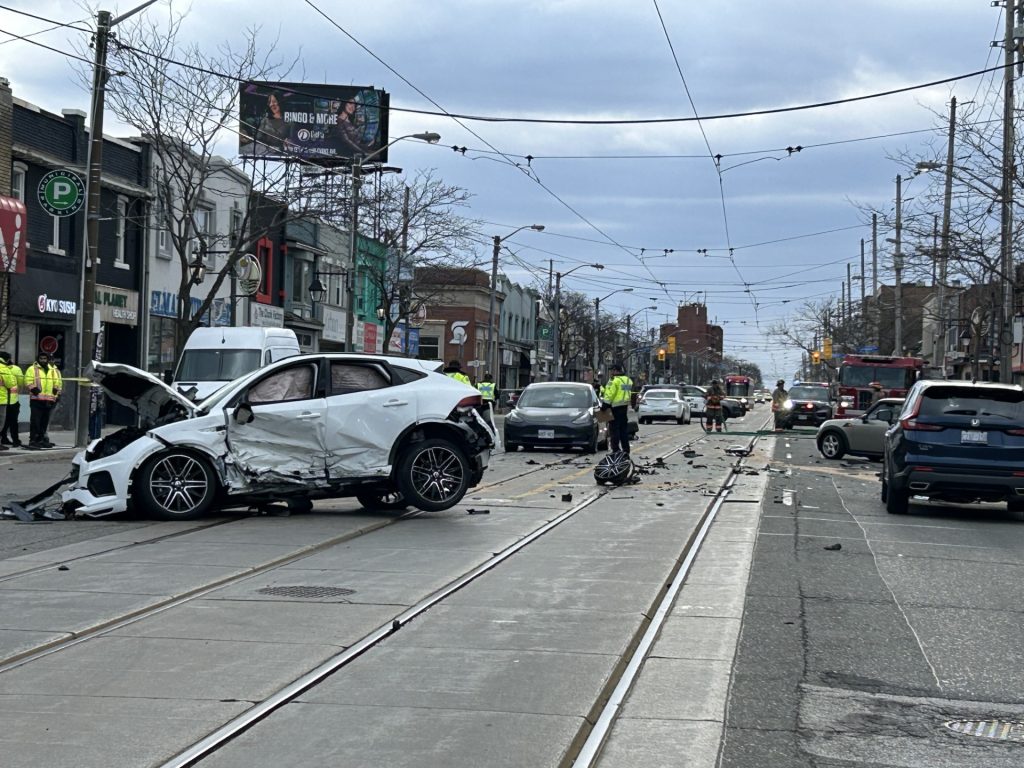Attawapiskat protesters hold die-in at Toronto’s Indian and Northern Affairs office
Posted April 13, 2016 12:48 pm.
Last Updated April 13, 2016 5:09 pm.
This article is more than 5 years old.
Attawapiskat protesters held a die-in at Toronto’s Indian and Northern Affairs office on Wednesday, after recent suicide attempts prompted the chief to declare a state of emergency.
The demonstration began at 25 St. Clair Ave. E., near Yonge Street, around 11 a.m.
Protesters took over the front lobby space of the office, hanging an upside-down Canadian flag at the reception desk and a flag of the Attawapiskat First Nation on a wall.
The group said they had two key demands – that Prime Minister Justin Trudeau visit Attawapiskat immediately, and that the demands of the youth of Attawapiskat, which include calls for better resources for young people, be met.
“When Trudeau says that he’s going up there and that the demands of the young people who wrote this are being addressed and being taken seriously, then you’re going to see us leave,” said Sigrid Kneve, who had pinned a sheet with the youth demands onto her clothing.
Wednesday’s demonstrators identified themselves as grassroots protesters and said they wanted to see improvements in Attawapiskat, as well as in other First Nations communities.
“To wait until an emergency situation is shameful. So that’s why we’re here,” said Carrie Lester. “People need to wake up.”
On Monday, community leaders intervened after discovering that 13 young people on the reserve, including a nine-year-old, had made a pact to take their own lives. So far this month, Attawapiskat has recorded 11 suicide attempts, and 28 others in March.
Dozens of young people in Attawapiskat came together on Monday to discuss “what we have” and “what we need.” Rebecca-Lynn Angel Hookimaw, a high school student, posted photos of the posters on Facebook.
Hookimaw said they already have a gym, healing lodge, and schools. However, they need mental health workers and a library.
It appears protesters brought the poster to Toronto on Wednesday.
Suicide rates among First Nations youth are five to seven times higher than for non-Aboriginal youth, while the rate among Inuit youth is 11 times the national average, among the highest in the world.
With files from The Canadian Press








